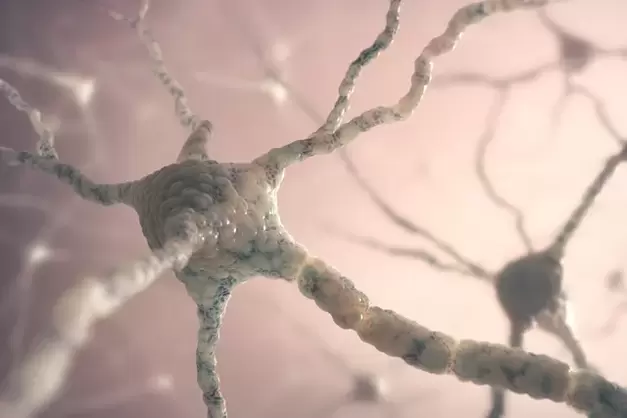
Human brain and memory training

benefit
- Concentration and reaction rate increase;
- Improved memory;
- Increased emotional resistance to negative factors;
- Movement coordination improves;
- Have more energy to complete daily tasks;
- The hidden abilities of the brain are revealed;
- Improved sleep quality.

Features
aldult
among children
- finger gymnastics;
- breathing exercises;
- logical rhythm;
- listen to music;
- Dance;
- Read and repeat what you read;
- Creativity: modeling, painting, knitting, etc. ;
- self-massage;
- kinesiology exercises;
- Teaching games: compare objects, guess objects by describing them, etc.
How to develop memory
best practice
for the brain
- Stand up straight with your back straight.
- Use one hand to massage the depression between the first and second ribs on the left and right below the collarbone. Place your other hand on your belly button to focus your attention on your center of gravity.
- Take any comfortable starting position: standing, sitting, or lying down with your ankles crossed.
- Stretch your arms forward, crossing your palms and interlocking your fingers.
- Turn your arms inward to chest level, keeping your elbows down.
- Return to starting position. Repeat 8-10 times.
- Starting position: standing.
- Lift your left leg and bend it at the knee.
- Touch your left knee with your right elbow. Then repeat with your right leg and left arm. Do 8-10 times.
- Starting position: Standing, in a relaxed position. Bend your knees slightly.
- Tilt your head toward your shoulders. Starting at this shoulder, extend your arms forward, like a tree trunk, and draw a horizontal figure-eight upwards, starting from the center of your field of view and counterclockwise. Important: Follow the movement of your fingertips with your eyes.
- Hold a marker or pen in both hands.
- Use both hands simultaneously to draw numbers, letters, etc. in mirror symmetry on a piece of paper.
- "Fist palm. " Stretch your arms in front of you. Make a fist with the fingers of your left hand and straighten your right hand. Next, keep changing the position of your fingers and gradually speed up your movements.
- "winner". Make a "V" sign with the fingers of one hand and an "OK" sign with the fingers of the other hand. Alternate hands and gradually increase speed.
- "Horns and Legs. " Show the horns with one hand and the legs (thumb, index and middle finger) with the other hand. Alternate hands and gradually increase speed.
- On one hand, starting from the index finger, connect the thumb to all the other fingers in sequence. Do the same thing with your other hand, but start with your pinky finger. Perform the exercise with both hands at the same time.
- "puzzle". On one hand, bend all your fingers except your index and middle fingers, and on the other hand, bend all your fingers except your ring and little fingers. Connect them like a puzzle. Switch hands and gradually speed up the movement.
for memory
- Route map.Draw a map of your route to work. Try to remember all the details: street names, metro stations, bus stops, shops you encounter along the way.
- letter.Quickly come up with words for each letter of the alphabet.
- magician.For this exercise, you will need a deck of playing cards. Shuffle the deck and memorize the order of the first 3-5 cards in the deck. Shuffle the deck and find the cards.
- carbon copy.Find any image on the internet or take a banknote. Study the painting and draw what you see on paper from memory. The drawing is then checked against the original drawing to identify any missing details.
- Memorize a school poem or learn your favorite song. It is also great for memory training.
- Before going to bed, remember the people and things around you. If you attend a lecture, try to reconstruct all the material in your mind.
- Take some objects. Take a minute to look at this in detail. Then leave the topic and try to describe it by writing a detailed review.
Other methods
- Keep learning new things.Minimal brain load and a lack of new information can lead to decline in memory and other cognitive abilities. Additionally, shifting your attention to non-work-related matters can help increase your stress tolerance. The best options are learning foreign languages, online courses, crafts, etc.
- play mind games, solving crossword puzzles, puzzles. This will help keep your mind clear and broaden your horizons.
- Get out of your comfort zone.For example, take a different route to work, develop a hobby that scares you, and actively meet and communicate with people in real life.
- Participate simultaneouslytwo hemispheres of the brain. Brush your teeth, eat, open doors, and hold handles with your non-dominant hand.
- Read and write by hand.Reading can train memory, activate imagination and creative thinking. Handwriting is a great way to develop motor skills.
Memory and Brain Development Products
- Fat fish.Source of Omega-3 polyunsaturated fatty acids, which influence the active saturation of brain cells with oxygen and nutrients.
- Bitter chocolate.Chocolate containing 70% cocoa may slow age-related mental decline and prevent cognitive impairment.
- Egg. Egg yolks contain choline, which the body uses to produce the neurotransmitter acetylcholine, which is responsible for memory and mood.
- Whole wheat breads and cereals.Grains are rich in vitamin B6, which improves metabolism, replenishes energy and improves blood circulation to the brain.
- tomato.Source of melatonin, which prevents brain cell aging and improves blood vessel conditions.
prevention
- Get rid of bad habits.Smoking, drinking alcohol, and taking psychotropic drugs can impair blood circulation to the brain, leading to oxygen deprivation and neuron death.
- Walk.Daily walking fills the brain with oxygen and helps improve concentration and memory.
- exercise.Physical activity improves blood circulation, helping to improve memory, coordination of movements, and better health.
- to the brainuniform loadAnd don't forget to take breaks.
- Maintain good sleep hygiene.Sleep at least 7-8 hours. Sleep is necessary for the brain to rest, strengthen necessary neural connections, and destroy unnecessary neural connections.








































































